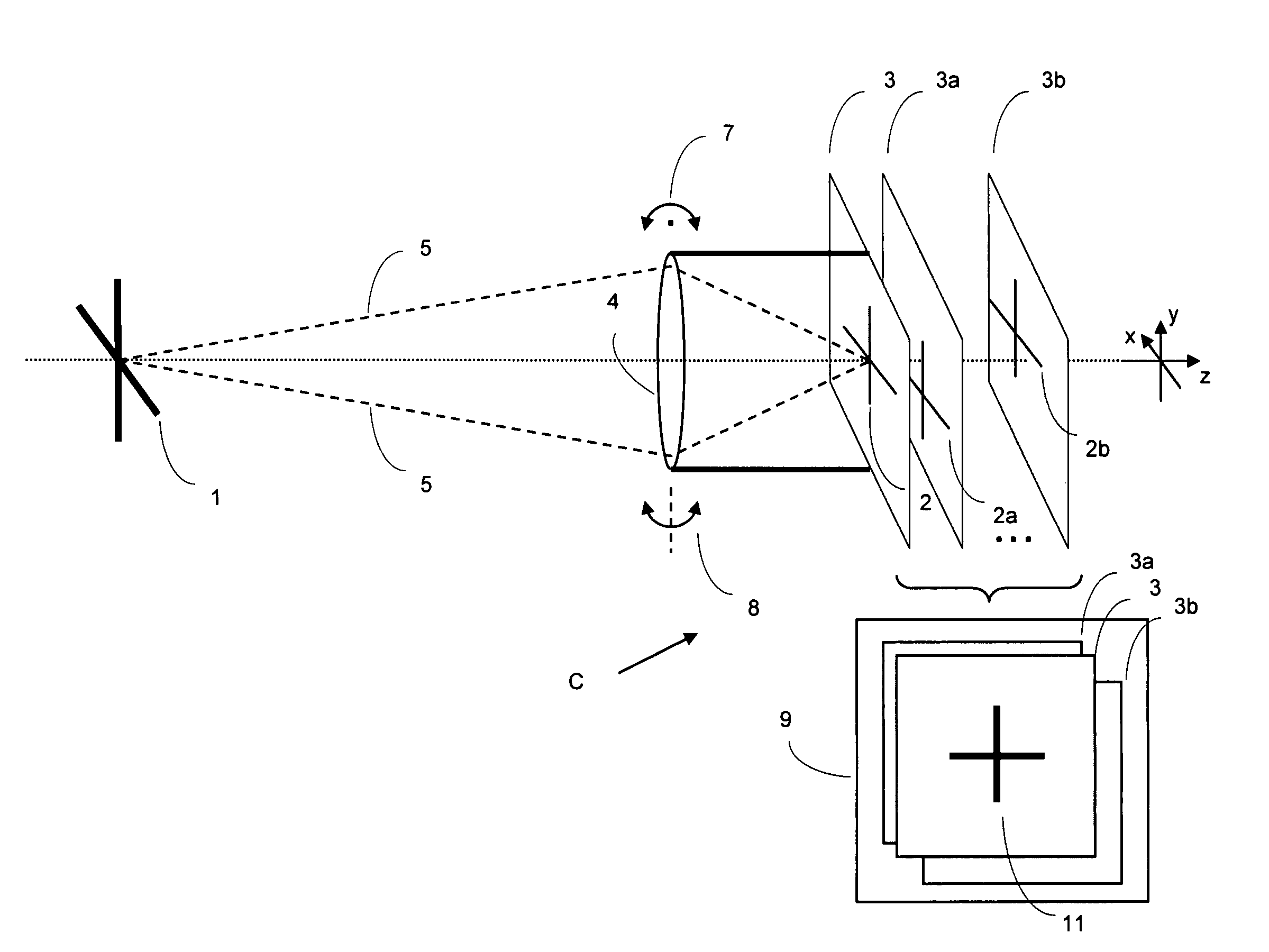Method and apparatus for electronically stabilizing digital images
a digital image and electronic stabilization technology, applied in the field of digital image processing, can solve the problems of image distortion and blurriness caused by camera movement, large aperture, heavy and expensive, etc., and achieve the effect of increasing the effective sensor resolution and sensor size, and increasing the dynamic rang
- Summary
- Abstract
- Description
- Claims
- Application Information
AI Technical Summary
Benefits of technology
Problems solved by technology
Method used
Image
Examples
Embodiment Construction
[0014]A generic photographic imaging system comprising a digital camera C is illustrated schematically in FIG. 1. A stationary object 1 is projected via a lens 4 of the camera onto an image sensor 3 at the focal plane of the camera. The camera with its lens is mounted on a fixed support 6 such as a tripod. Since the object 1 is assumed to be stationary and the camera is fixed and not moving, all light rays 5 leaving a particular point of the object are focused onto one point in the focal plane, as shown. This produces a sharp image 2 of the object 1 on the sensor 3.
[0015]If the camera cannot be held stable and in a fixed position, but rather is positioned manually, e.g. hand held, a certain amount of jitter motion will occur during the exposure time and may cause blurriness in the image. In principle, there are three translational motions and three rotational motions that are possible around the three-dimensional axes X, Y, and Z, as shown in the figure. Except for microscopy and ma...
PUM
 Login to View More
Login to View More Abstract
Description
Claims
Application Information
 Login to View More
Login to View More - R&D
- Intellectual Property
- Life Sciences
- Materials
- Tech Scout
- Unparalleled Data Quality
- Higher Quality Content
- 60% Fewer Hallucinations
Browse by: Latest US Patents, China's latest patents, Technical Efficacy Thesaurus, Application Domain, Technology Topic, Popular Technical Reports.
© 2025 PatSnap. All rights reserved.Legal|Privacy policy|Modern Slavery Act Transparency Statement|Sitemap|About US| Contact US: help@patsnap.com



